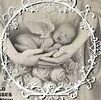
Children often have unique questions and concerns about death. A child funeral is a special service that honors the life of a child and offers comfort to those who have lost a child.
A funeral can be a time to remember the hopes and dreams you had for your child. It is a time to share memories of your child and connect with other people who loved them. A celebration of life ceremony, a memorial service or a graveside service are all ways to remember your child and honor them.
Some families choose to arrange a funeral for their infant or child with a funeral home, while others choose to organize the service themselves. In either case, it is important to include your child in the planning process. Talk with them and listen to their questions and concerns. A funeral director can help make suggestions based on the child’s age and comfort level. They can also provide special touches, such as a casket lining or ceremonial shroud made from the child’s favorite blanket, doll bed or sports team jersey; an open or closed casket; a baby or children’s memorial table; or a funeral vehicle decorated with their name, birth date and/or a photo of them.
During the visitation period and funeral, it is important to talk with your child about what they will experience. During this conversation, it is appropriate to explain that their sibling is no longer alive and will not come back. It is also helpful to explain that some people have closed caskets and that their sibling will not be able to see them. It is also important to reassure them that their sibling cannot feel cold, pain or fear.
If your child wants to view their sibling’s body, it is best to do so with close adult supervision. The viewing may be more difficult for young children and it is normal if they become upset. Some families find it comforting to give the children a snack or beverage during the viewing and to offer them some breaks from the crowd.
If you are having a funeral service, it is a good idea to prepare a booklet that lists what will happen in the service for your guests to take with them. This can be a simple handout or a more professional brochure. A point person can be assigned to any child who may need a break during the service. If they leave, it is important to have a trusted adult who can bring them back and be a comfort to them.
